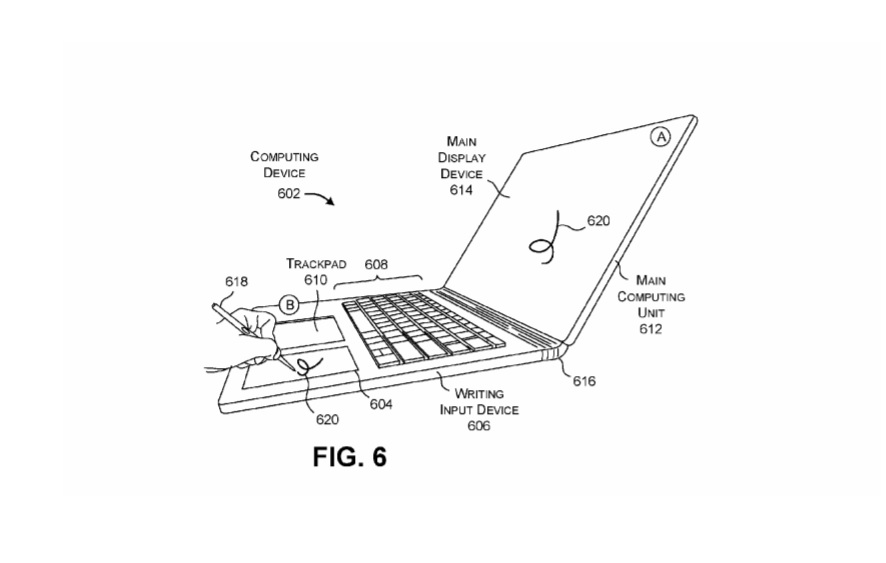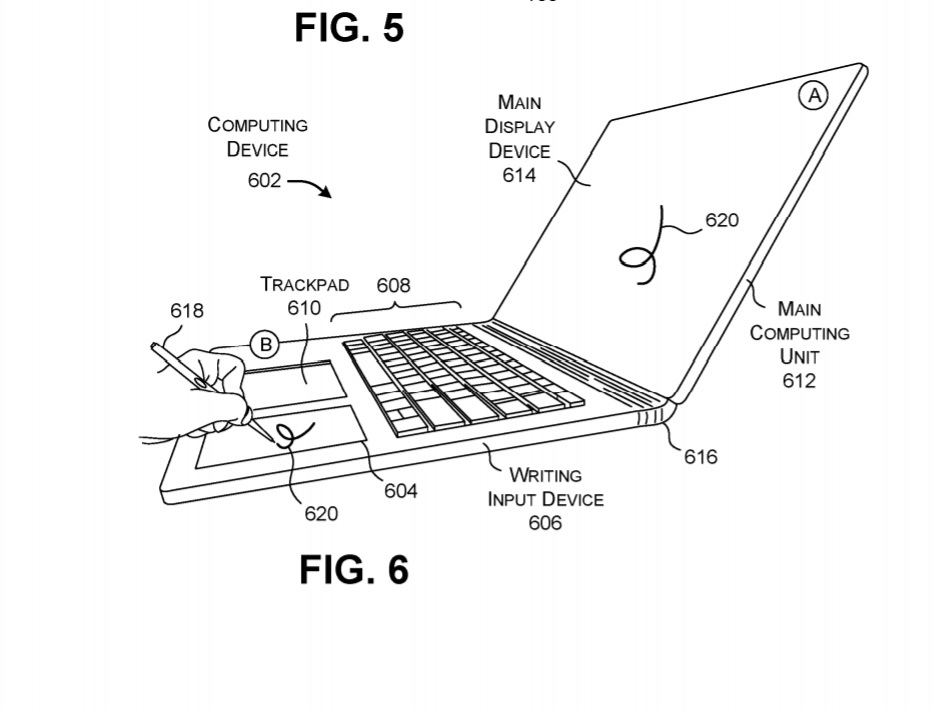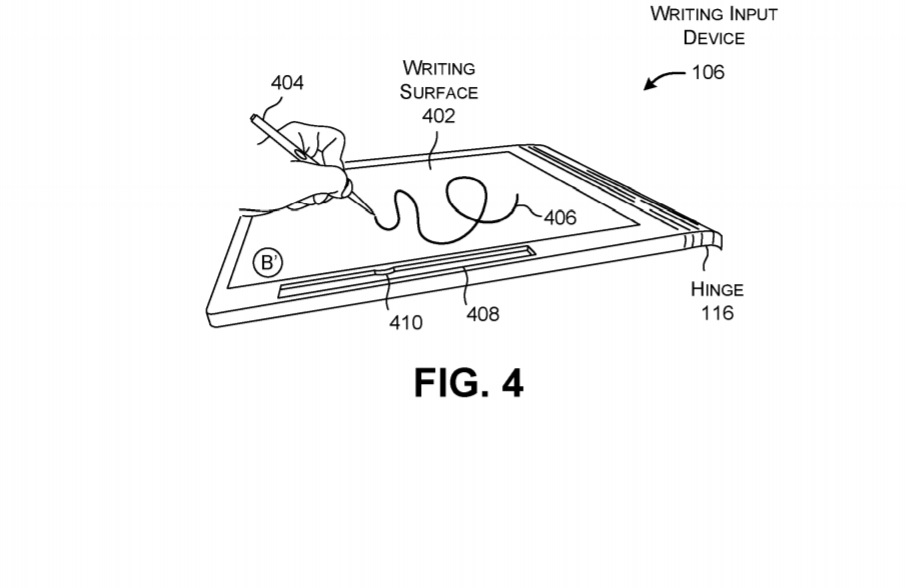There’s no doubt that dual-screen devices are the future of computing. With the reveal of the Surface Neo and Duo, it’s obvious that Microsoft believes that that two screens could shape up to be better than one.
However, a patent shows that the company might also be considering adding a secondary touch screen to the keyboard part of a device with a detachable screen — one that could be presumed to be a future Surface Book 3.
The original patent was originally filed in May of 2019 and was made public at the start of December, as originally uncovered by the blog Windows United. In its details, the patent explains how a user could take advantage of additional spaces for inking on a detachable device.
“A computing device is described herein for capturing handwritten marks. It includes a main computing unit and a detachable writing input device joined by a connecting mechanism. The main computing unit includes a main display device, while the writing input device hosts a keyboard and a writing surface,” Microsoft explains in the patent.
The patent also dives a bit deeper and includes two diagrams of how this inking space can be used. As seen below, the inking space could be conveniently placed on the keyboard deck next to the trackpad. It also could be placed on the back of a detachable keyboard.
Although it is important to note that not all patents end up being produced, both diagrams do show a device that looks a lot like a new Surface Book. This includes the hinges as well as the keyboard deck, which looks similar to an existing model.
Other companies such as Asus have already added a secondary touchscreen panel to the keyboard deck on a laptop. The trackpad on the Asus ZenBook Pro 15 can also be used in an Extension Display mode. This essentially adds a second display where you can drag apps just like you can with an external monitor.
Either way, this isn’t something new for Microsoft. The company has previously played with the idea of a secondary touchscreen to its other devices before. A much older patent hinted that Microsoft was looking into including a reflective OLED touchscreen on the rear of a Surface Pro device, for inking, or for displaying messages.





